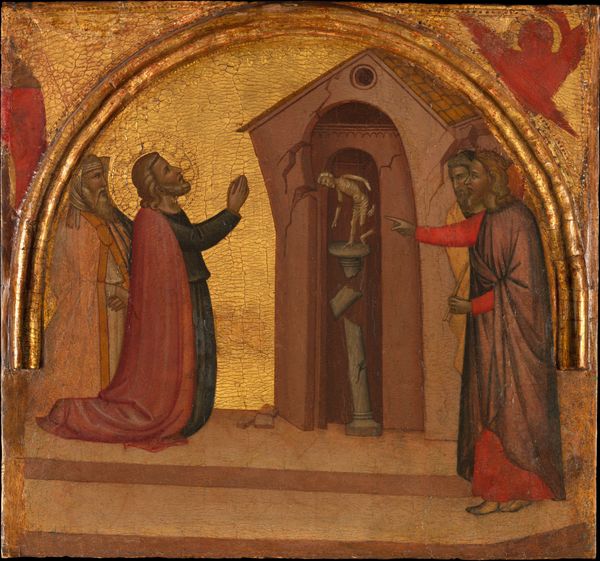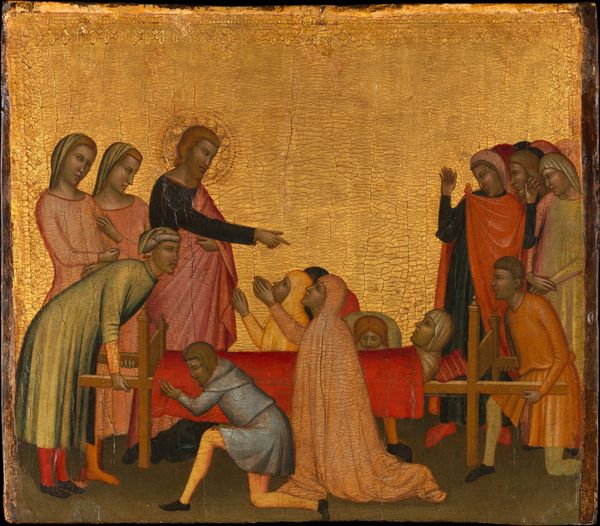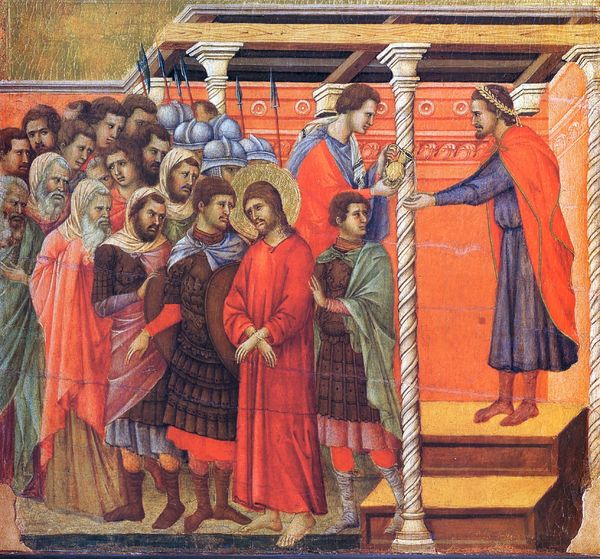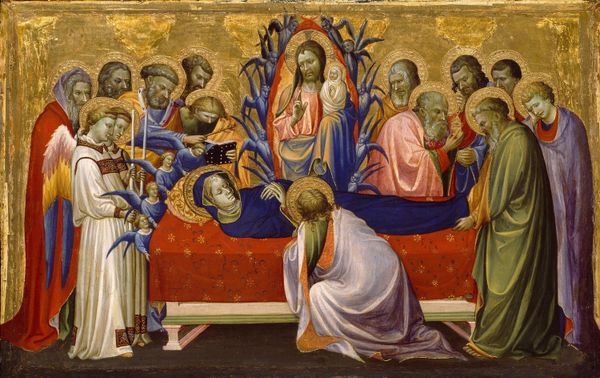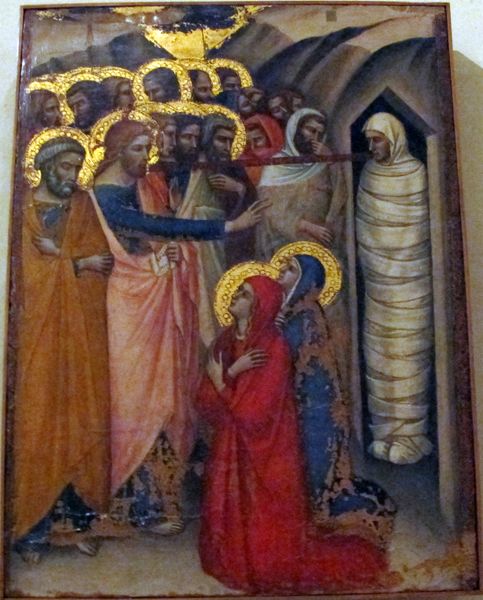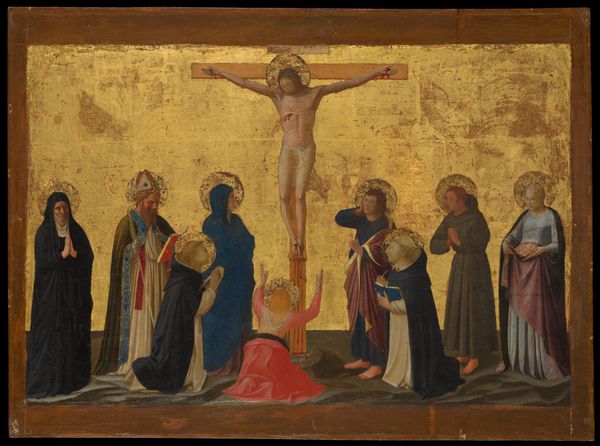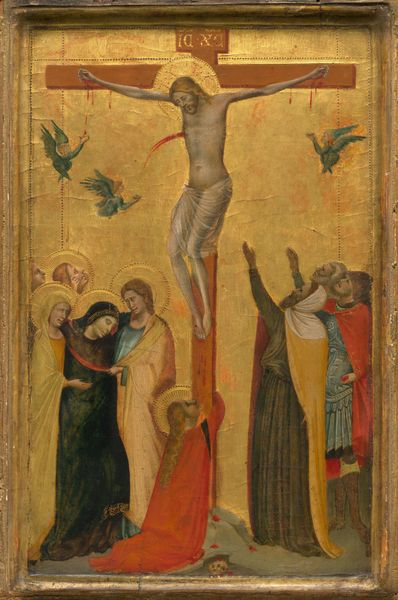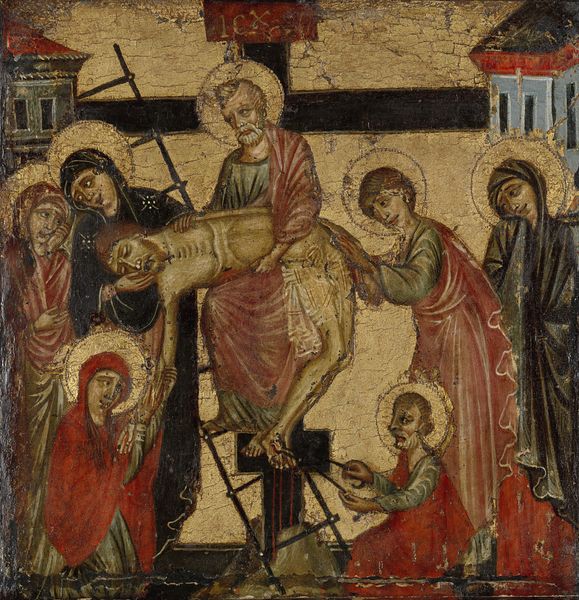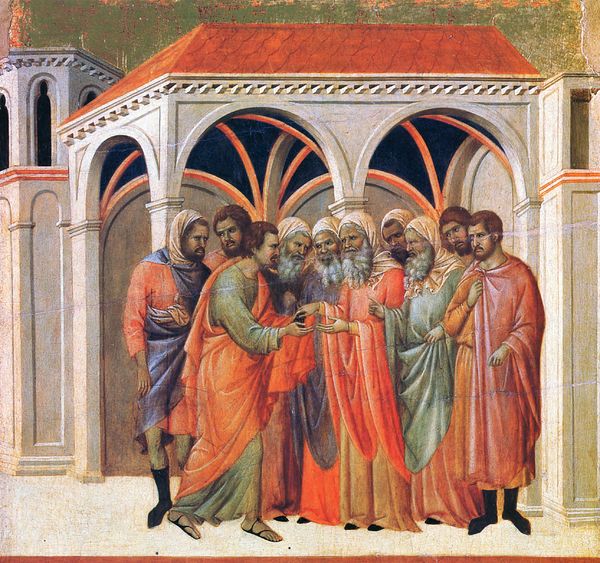
Saint John the Evangelist with Acteus and Eugenius 1365 - 1374
0:00
0:00
tempera, painting
#
portrait
#
medieval
#
narrative-art
#
tempera
#
painting
#
gothic
#
figuration
#
men
#
history-painting
#
italian-renaissance
#
watercolor
#
angel
Dimensions: 14 3/8 x 16 1/4 in. (36.5 x 41.3 cm)
Copyright: Public Domain
Editor: Here we have Francescuccio Ghissi's "Saint John the Evangelist with Acteus and Eugenius," made with tempera sometime between 1365 and 1374. What strikes me first is the division of space—a crowd on one side and then John healing someone on the other, separated by what looks like an abstract golden field. What stands out to you when you examine its structure? Curator: The use of a gold ground, common in Gothic and early Renaissance painting, immediately establishes a symbolic, otherworldly space, quite separate from any earthly realism. The composition relies on a clear division, as you noted, almost a diptych within a single frame. How do you read the gestures of the figures, particularly those in the cluster on the left? Editor: I notice a lot of pointed fingers and upturned hands. Are those representative of Renaissance storytelling? Curator: Precisely. Note how Ghissi employs the limited vocabulary of gesture available to him to narrate a story. The index finger is pointing heavenward and emphasizes the moment. Furthermore, observe the color relationships. The careful placement of orange hues is a powerful formal element, visually connecting disparate areas of the painting. What effect does that achieve? Editor: It almost binds together what would otherwise be disconnected scenes. Curator: Indeed. It creates a visual rhythm, leading the eye across the surface and uniting the composition despite its compartmentalization. The halos are an expected stylistic touch, but the arches above that form an almost mirror. Editor: This approach, focusing on visual elements rather than historical details, really opens up a new appreciation for the careful structure and color at play in "Saint John the Evangelist." Curator: Yes, this demonstrates how a focus on form reveals underlying meaning, offering fresh insights into a familiar narrative.
Comments
No comments
Be the first to comment and join the conversation on the ultimate creative platform.
